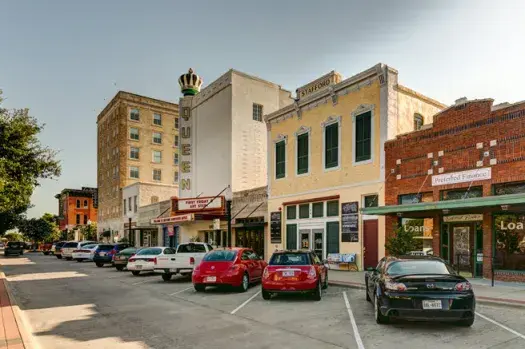Where Legends Sang & Boots Hit the Floor: The Story of the Texas Hall of Fame
- Adam Drake
- Oct 15
- 3 min read
Updated: Oct 16
For more than three decades, the Texas Hall of Fame stood as the heartbeat of Bryan’s nightlife, a place where the neon glowed just right, the hardwood floor stayed worn from countless boots, and the music never stopped rolling. Opened in 1978, the Hall quickly became a cornerstone of local culture and one of the most beloved dancehalls in Texas. Founded and operated for years by Johnny Lyon, it wasn’t just a bar or a concert venue; it was a gathering place where generations met, danced, fell in love, and celebrated everything that made Texas country music feel like home.
In its prime, the Texas Hall of Fame was the place to be on a Friday or Saturday night. Students from Texas A&M and locals from across the Brazos Valley would line up to hear live music from rising Texas artists who would go on to shape the sound of country music across the state. The two-step reigned supreme and everyone left with a story.
Part of what made the Texas Hall of Fame so unforgettable was the caliber — and the variety — of artists who graced its stage. The Hall was more than a dance floor; it was a launchpad and a proving ground for some of the biggest names to come through Texas. In its heyday, the venue hosted country legends like David Allan Coe, whose outlaw swagger fit perfectly within those beer-soaked walls. Crowds packed in shoulder-to-shoulder to sing along to songs that embodied Texas independence and rebellion.
The Hall also welcomed rising stars who would later define modern Texas country — including Aaron Watson, who has long spoken fondly of his time performing there. In fact, Watson immortalized the venue in his song “Whisper My Name”.
Old good time Johnny's long gone, but he's never forgot
They turned his honky tonk into a Walmart parking lot
We'd tear it up, we'd close it down, drive out to Canyon Lake
Singing you love songs all night just like I was George Strait
But the Hall wasn’t only about country. True to its spirit, it embraced a wide range of performers over the years, even hosting acts like Vanilla Ice, whose appearance brought a different kind of energy to Bryan’s most famous dance floor. That mix of grit, nostalgia, and experimentation made the Texas Hall of Fame unique.
The Hall’s charm was that it never tried to be fancy, it was real. You could feel the history in its walls, smell the sawdust on the floor, and hear the laughter echoing long after closing time. It was the kind of place that raised a generation on twangy guitars, longneck bottles, and the simple joy of a good night out with friends. For Bryan and College Station locals, it wasn’t just a venue, it was a rite of passage.
When owner Johnny Lyon passed away in 2010, the Hall’s fate began to shift. After more than 30 years of music and memories, the Texas Hall of Fame closed its doors for good, marking the end of an era for Bryan’s dancehall culture. The announcement hit hard for many who had grown up under its neon lights. It was the kind of place you thought would always be there until, one day, it wasn’t.
Yet, the legacy of the Texas Hall of Fame still lingers. Ask anyone who spent their college nights or dates there, and you’ll see their eyes light up. They’ll tell you about the nights Aaron Watson played, about learning to dance on the big dance floor, or about the friendships that began between songs. The Hall shaped more than memories; it shaped the rhythm of life in Bryan, leaving behind a spirit that still echoes through every honky-tonk and bar in the Brazos Valley.
Places like the Texas Hall of Fame remind us how deeply a building can hold the heart of a town. They’re more than wood and neon; they’re where stories are told, where music brings people together, and where Texas culture lives loud and proud. The Hall may be gone, but its legend is still dancing in Bryan.





Comments